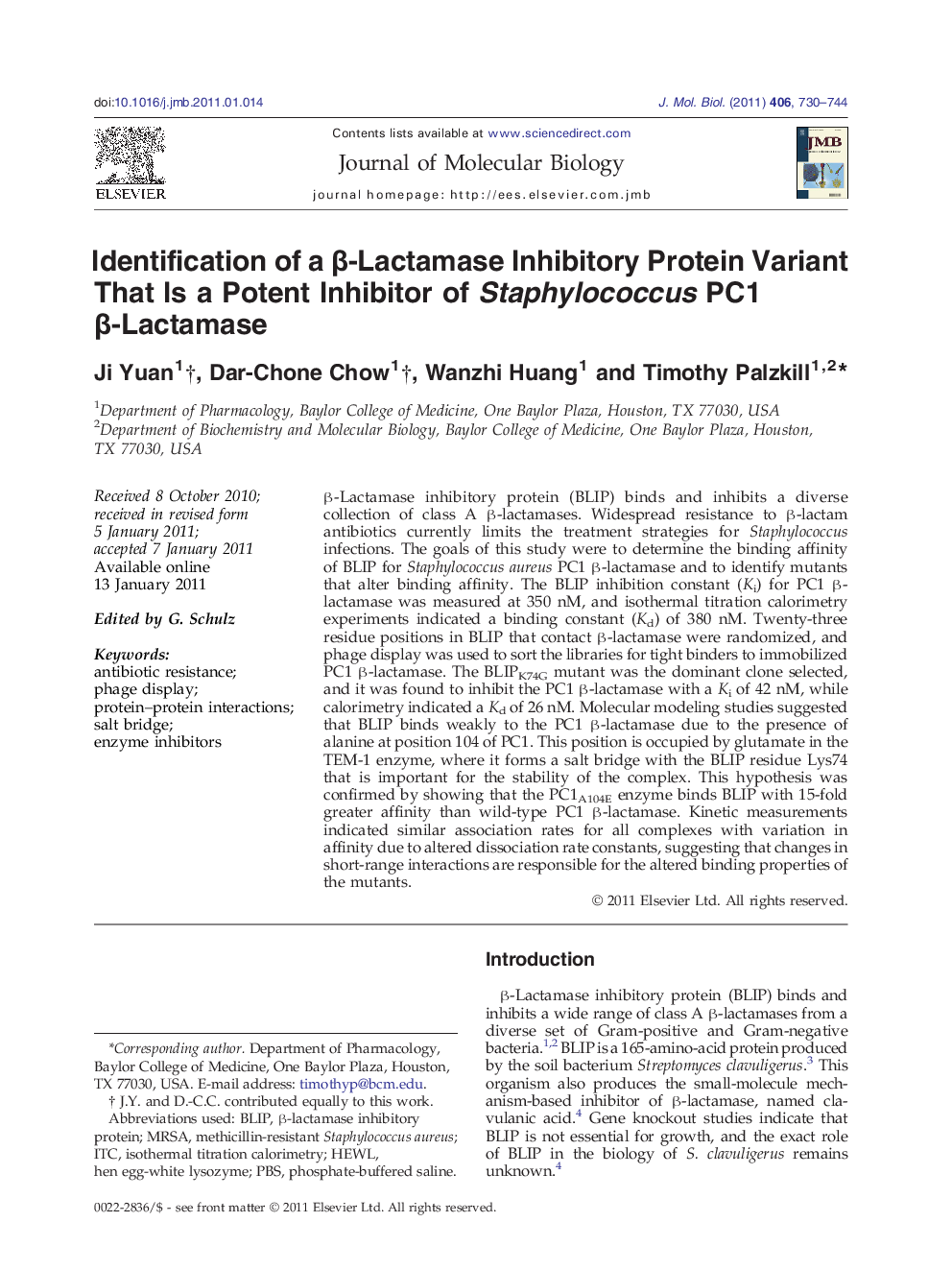| Article ID | Journal | Published Year | Pages | File Type |
|---|---|---|---|---|
| 2185692 | Journal of Molecular Biology | 2011 | 15 Pages |
β-Lactamase inhibitory protein (BLIP) binds and inhibits a diverse collection of class A β-lactamases. Widespread resistance to β-lactam antibiotics currently limits the treatment strategies for Staphylococcus infections. The goals of this study were to determine the binding affinity of BLIP for Staphylococcus aureus PC1 β-lactamase and to identify mutants that alter binding affinity. The BLIP inhibition constant (Ki) for PC1 β-lactamase was measured at 350 nM, and isothermal titration calorimetry experiments indicated a binding constant (Kd) of 380 nM. Twenty-three residue positions in BLIP that contact β-lactamase were randomized, and phage display was used to sort the libraries for tight binders to immobilized PC1 β-lactamase. The BLIPK74G mutant was the dominant clone selected, and it was found to inhibit the PC1 β-lactamase with a Ki of 42 nM, while calorimetry indicated a Kd of 26 nM. Molecular modeling studies suggested that BLIP binds weakly to the PC1 β-lactamase due to the presence of alanine at position 104 of PC1. This position is occupied by glutamate in the TEM-1 enzyme, where it forms a salt bridge with the BLIP residue Lys74 that is important for the stability of the complex. This hypothesis was confirmed by showing that the PC1A104E enzyme binds BLIP with 15-fold greater affinity than wild-type PC1 β-lactamase. Kinetic measurements indicated similar association rates for all complexes with variation in affinity due to altered dissociation rate constants, suggesting that changes in short-range interactions are responsible for the altered binding properties of the mutants.
Graphical AbstractFigure optionsDownload full-size imageDownload high-quality image (105 K)Download as PowerPoint slideResearch Highlights► Phage display screening of a combinatorial library of BLIP mutants was used to identify a potent inhibitor of Staphylococcus β-lactamase. ► Charge complementarity at the protein–protein interface is the mechanism for the tight binding of PC1 β-lactamase by the inhibiting BLIP variant. ► Charge complementarity can be achieved by neutralizing the net charge in the interface, either by introducing an oppositely charged residue or by eliminating charged residues.
